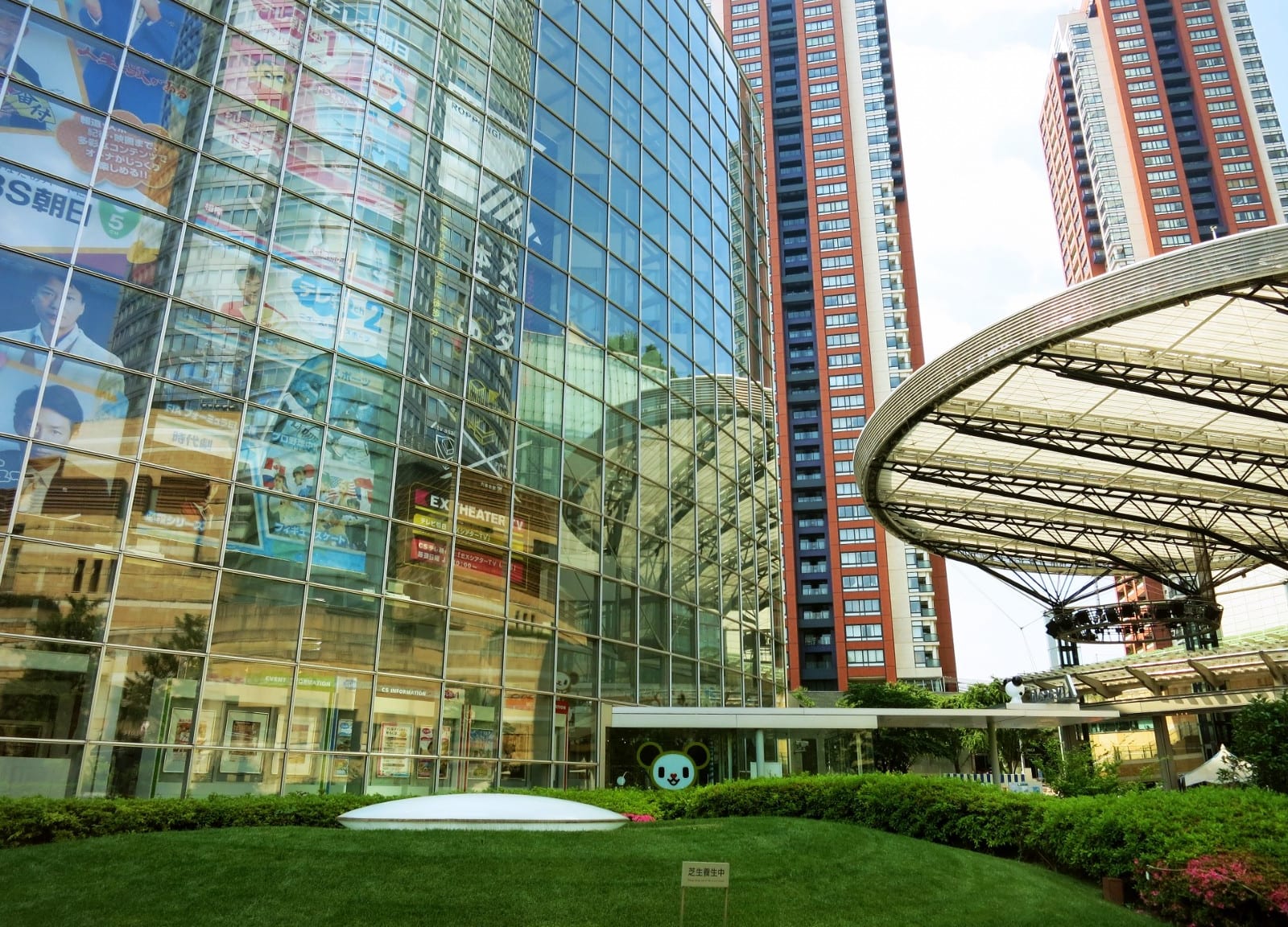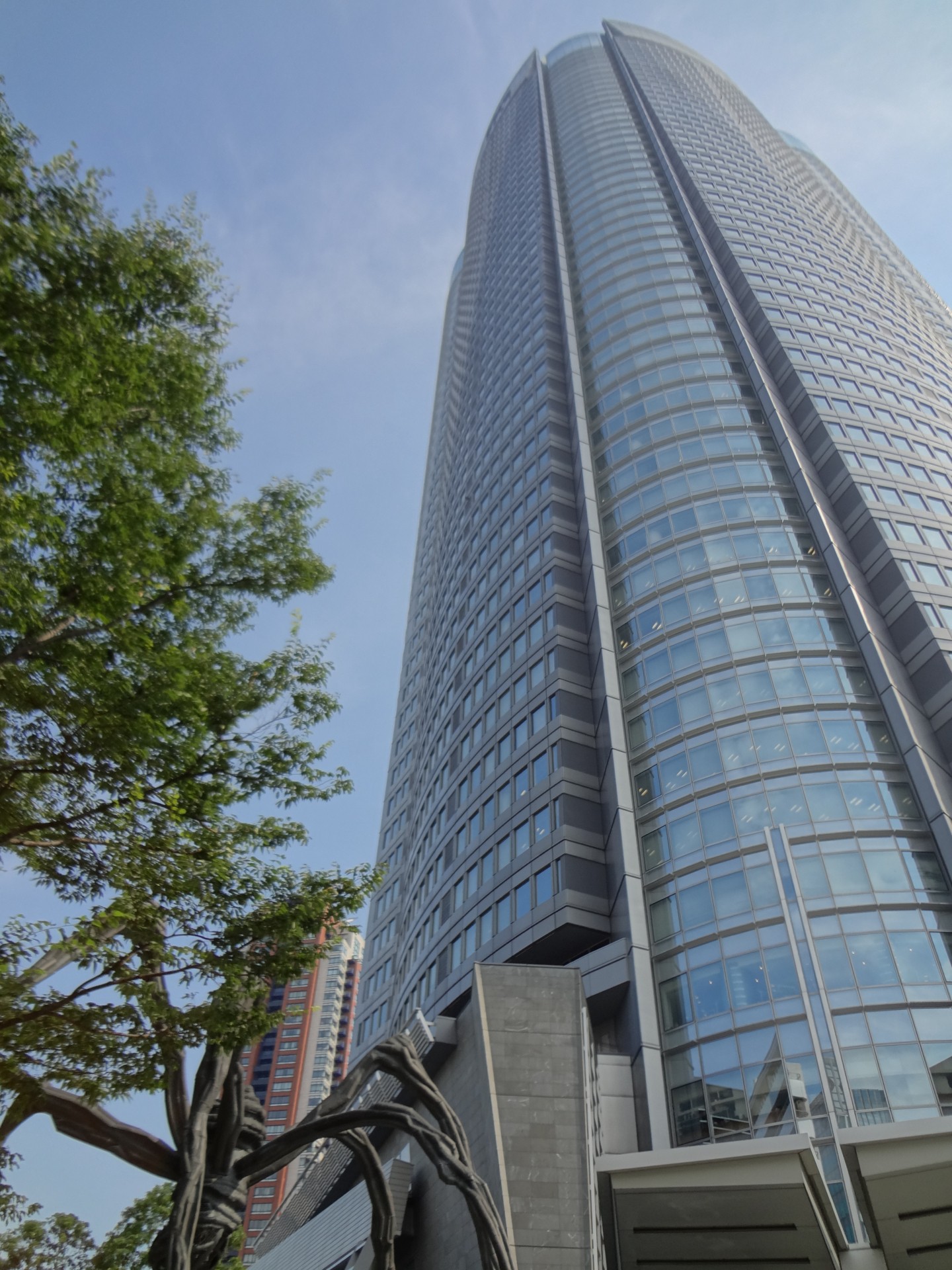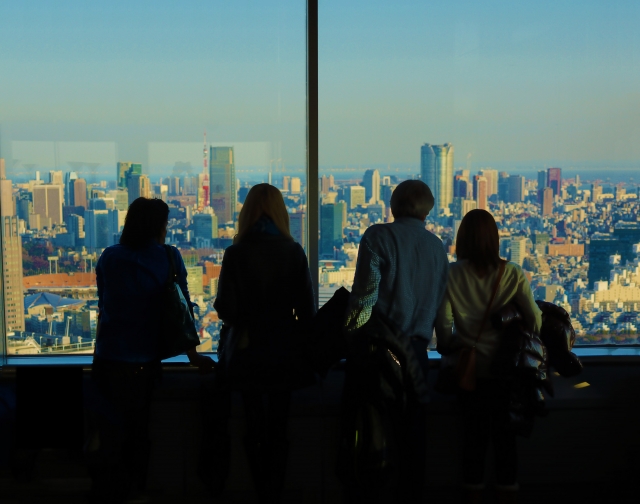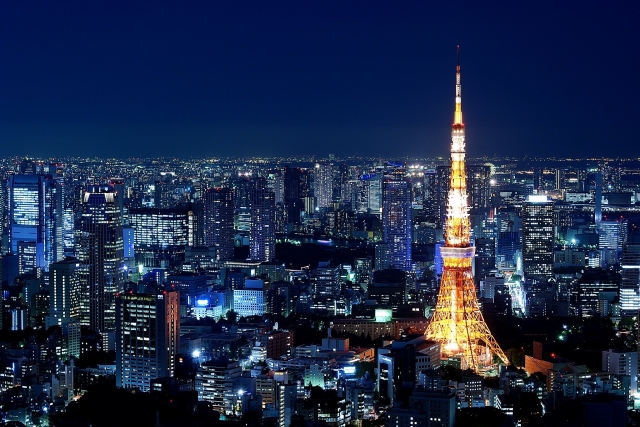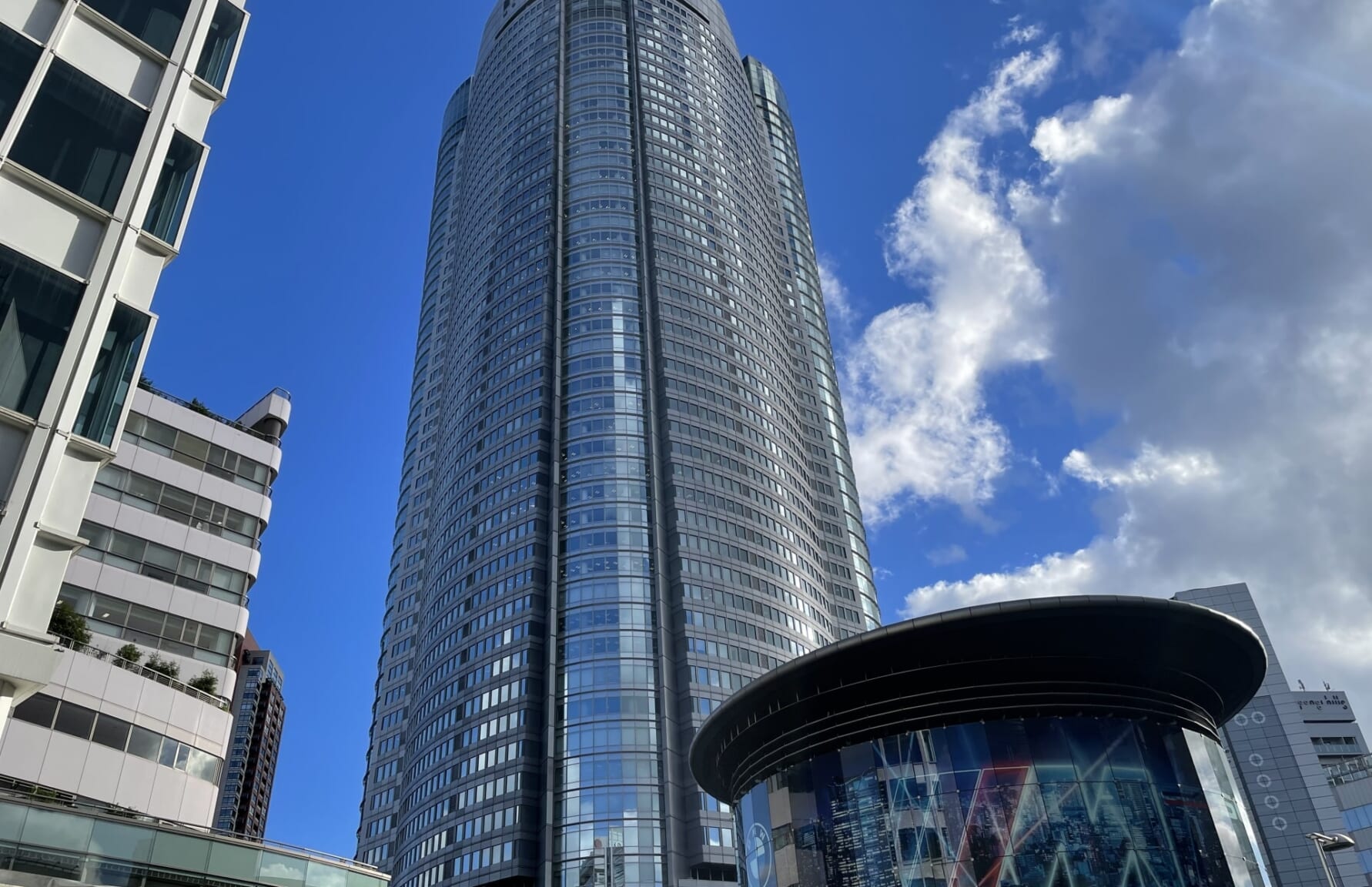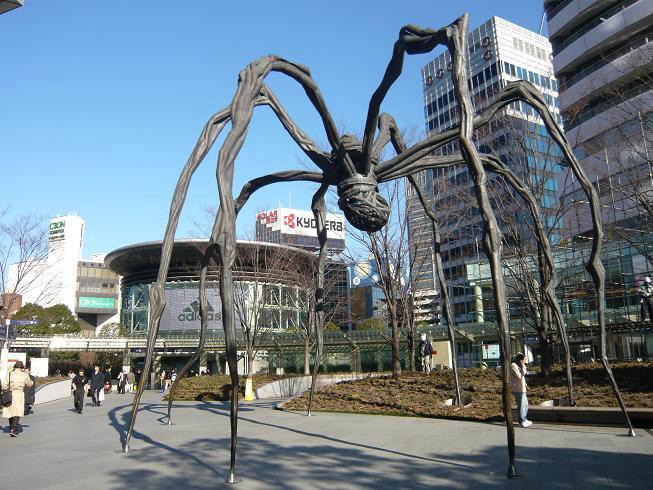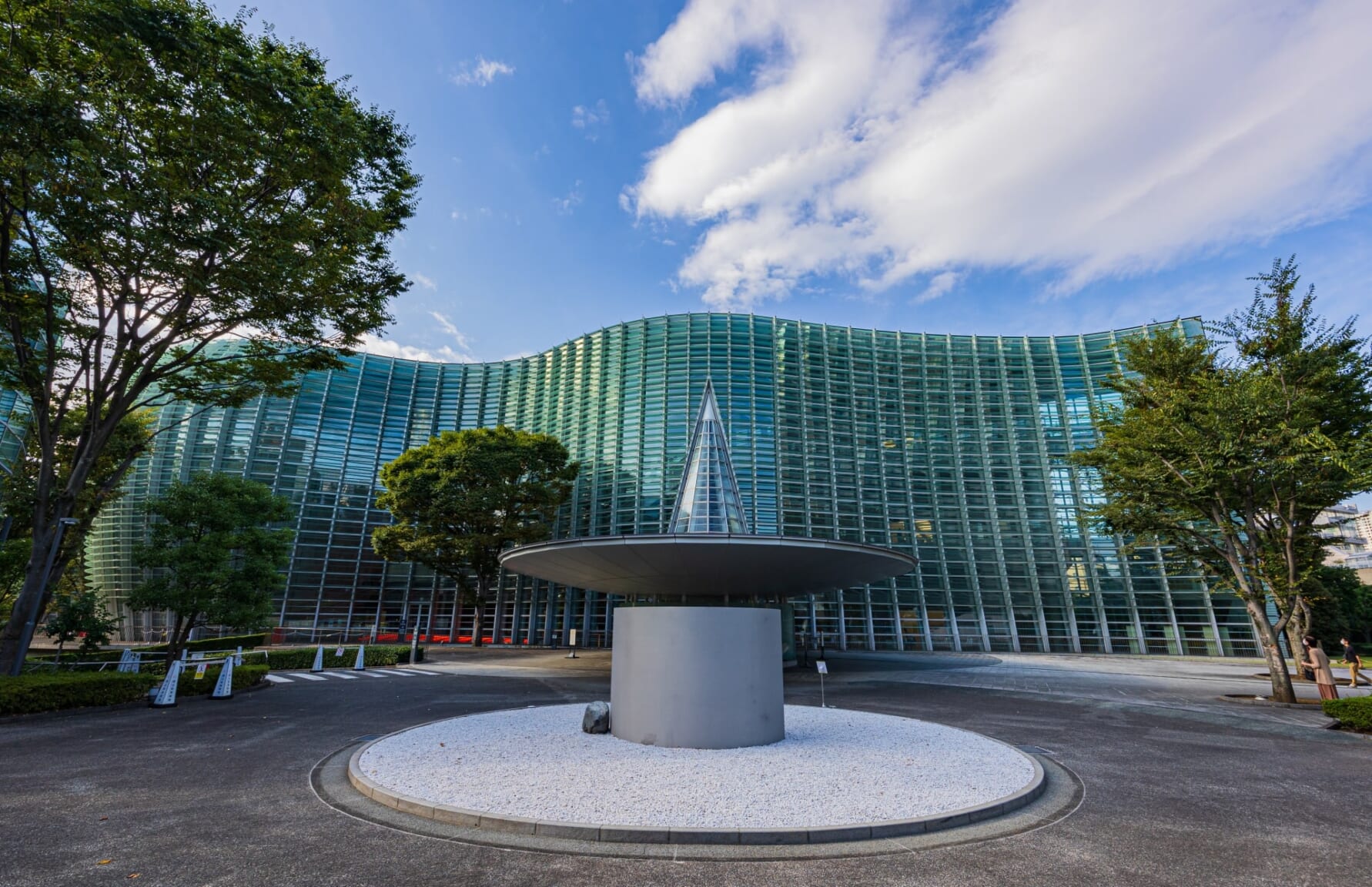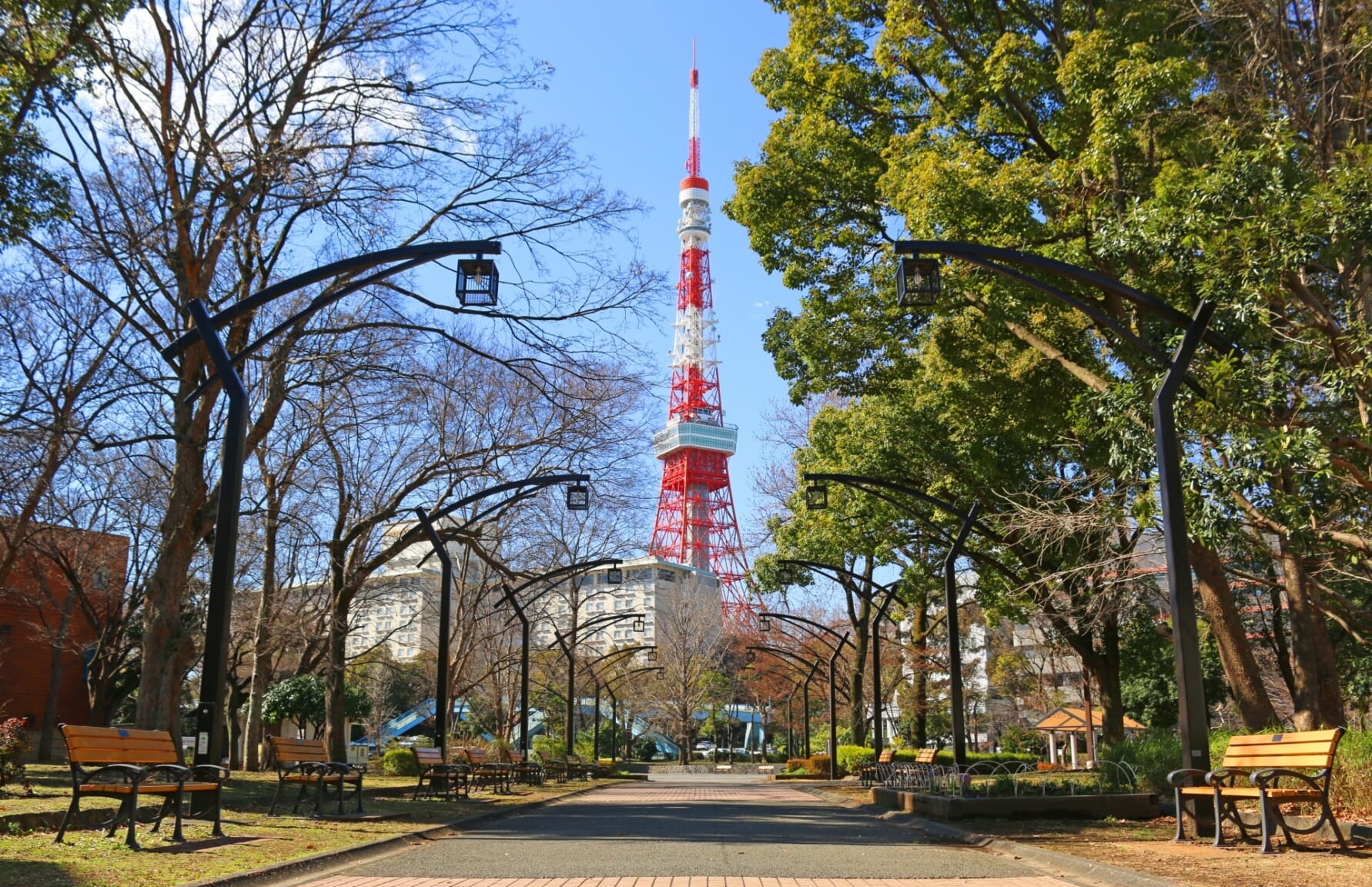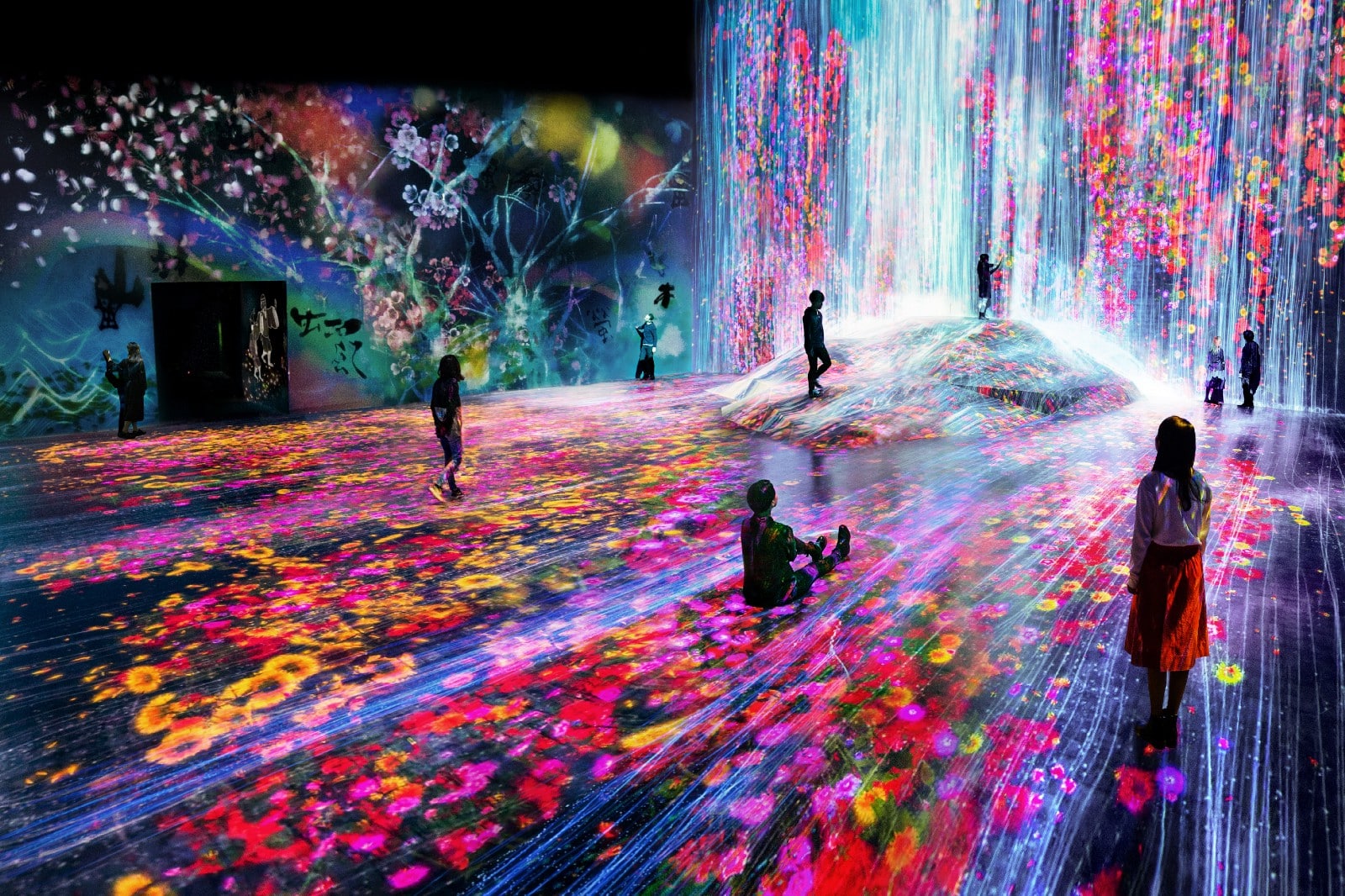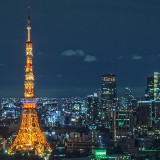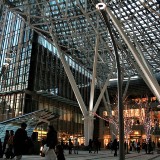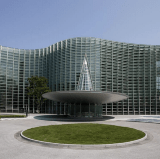Roppongi Hills: Tokyo’s Coolest Entertainment Complex
Roppongi Hills
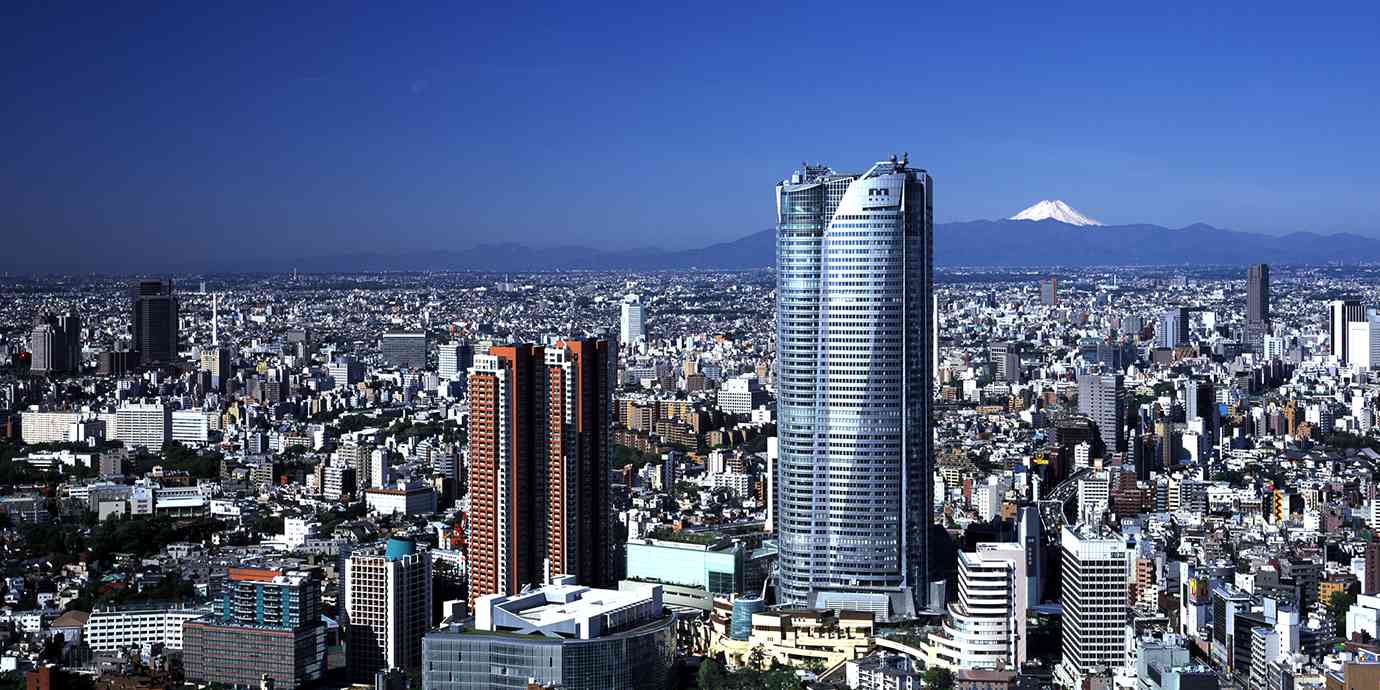
Roppongi Hills is a deliberate experiment in how Tokyo lives, works, and consumes culture at scale. Opened in 2003 and developed by Mori Building, the massive complex was designed to bring together luxury living, high-end retail, global business, and contemporary art under one roof
Nearly two decades later, it still functions as a vertical neighborhood where a startup founder, a Michelin-starred chef, and an art curator might all share an elevator. It’s polished, pricey, and unapologetically curated. But the real story is in how it continues to evolve, trend-watch, and keep pace with the city that never slows down.
If you’re looking for a comprehensive guide to the Roppongi area, check out our All-in-One Guide to Roppongi!
*Please note that this article contains affiliate links.
What is Roppongi Hills?
Roppongi Hills (六本木ヒルズ) is one of Tokyo’s most ambitious urban redevelopment projects, created by Mori Building and opened in 2003. Built on the idea of a “compact city,” it’s designed to combine workspaces, homes, shops, culture, and public areas into a walkable environment—stacked vertically rather than spread across blocks. It’s not a traditional shopping mall or an office district. It’s an ecosystem built around convenience, aesthetics, and control.
At the center stands the 54-story Mori Tower, a landmark skyscraper housing global corporate offices, fine dining, and two major public attractions: the Tokyo City View observation deck and the Mori Art Museum, both occupying the upper floors. Around it, you’ll find over 200 retail stores and restaurants, luxury residences, a cinema complex, a hotel, and landscaped public spaces like Roku-Roku Plaza.
The development was also designed with safety and sustainability in mind, featuring private infrastructure systems and seismic reinforcement measures. It’s clean, highly managed, and intentionally global-facing—a modern neighborhood for people who don’t mind spending for quality and efficiency. While some see it as a commercial fortress, others experience it as a lifestyle choice—especially for Tokyo professionals who work long hours and want everything within arm’s reach.
What to See and Do in Roppongi Hills
Roppongi Hills is built for movement, between art and shopping, between a business lunch and rooftop cocktails. While the complex is often viewed as a destination for upscale Tokyo living, it offers plenty to visitors, too. Like curated art shows, open-air plazas, where the experience here is less about rushing through landmarks and more about observing the rhythm of a self-contained city district.
Below are the top things to see and do:
Tokyo City View & Sky Deck
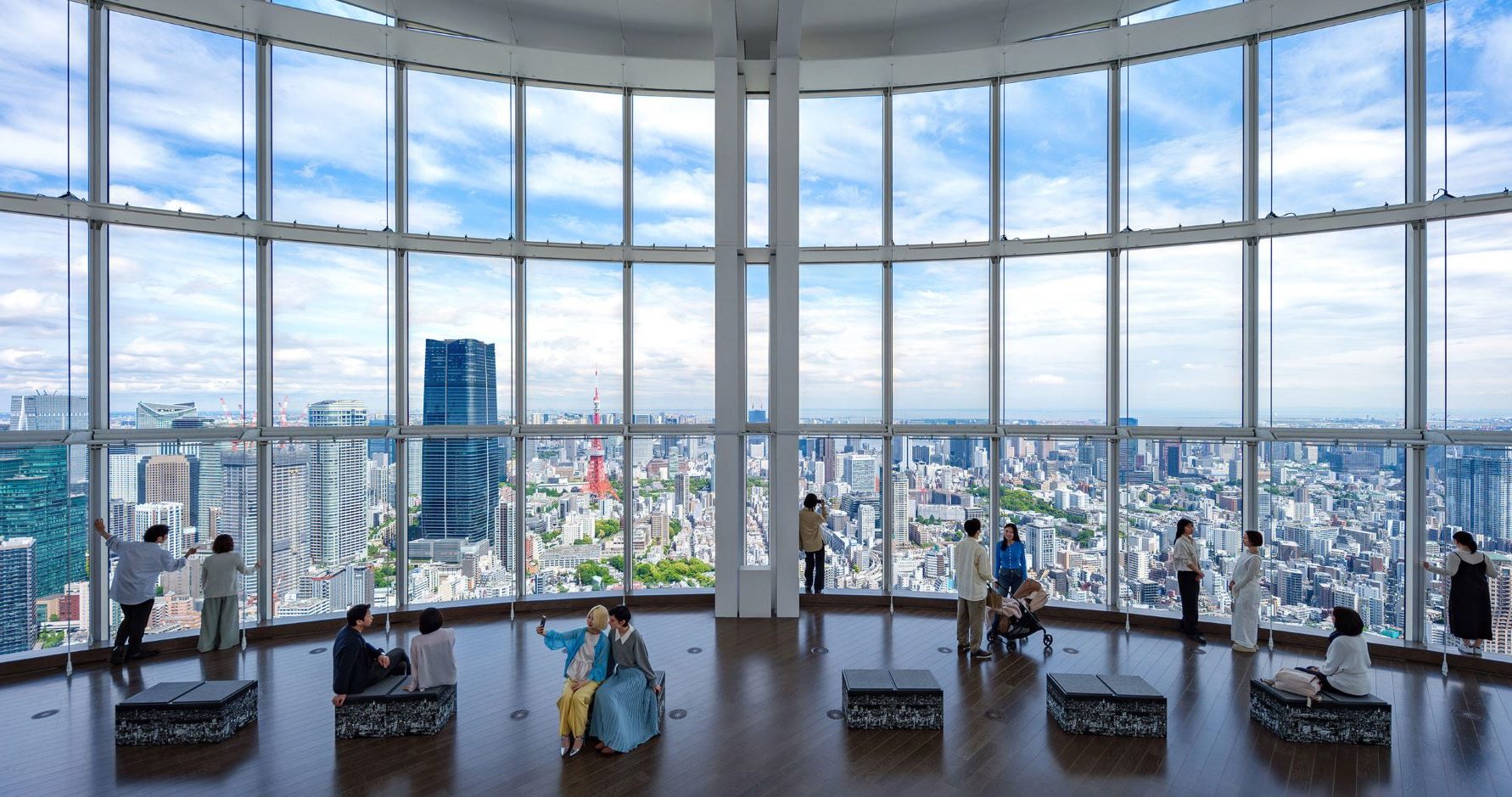
Located on the 52nd floor of the Mori Tower, Tokyo City View is one of the best places in the city to take in the skyline. The indoor observatory features floor-to-ceiling glass windows with panoramic views stretching from Shinjuku to Yokohama on clear days. For an additional fee, visitors can access the Sky Deck, an open-air rooftop space that gives an unobstructed view of landmarks like Tokyo Tower and even Mount Fuji when the weather allows.
Hours extend into the evening, making it a favorite for photographers chasing that golden-hour shot or travelers looking to end the day with a view of Tokyo glowing below.
<<Book your Tokyo City View tickets here!>>
Mori Art Museum
Sharing the top floors with Tokyo City View, the Mori Art Museum specializes in contemporary art with a strong international outlook. The rotating exhibitions often include global names alongside emerging Japanese artists, tackling topics like climate, identity, technology, and architecture. Past shows have featured creators such as Takashi Murakami, Ai Weiwei, and Leandro Erlich.
Unlike older, more traditional galleries, the museum embraces media installations and large-scale immersive works. English signage is thorough, and guided tours or digital audio guides are often available. Tickets are typically bundled with observation deck access, making it a good value for visitors looking for both views and visual culture.
Seasonal Events & Illuminations
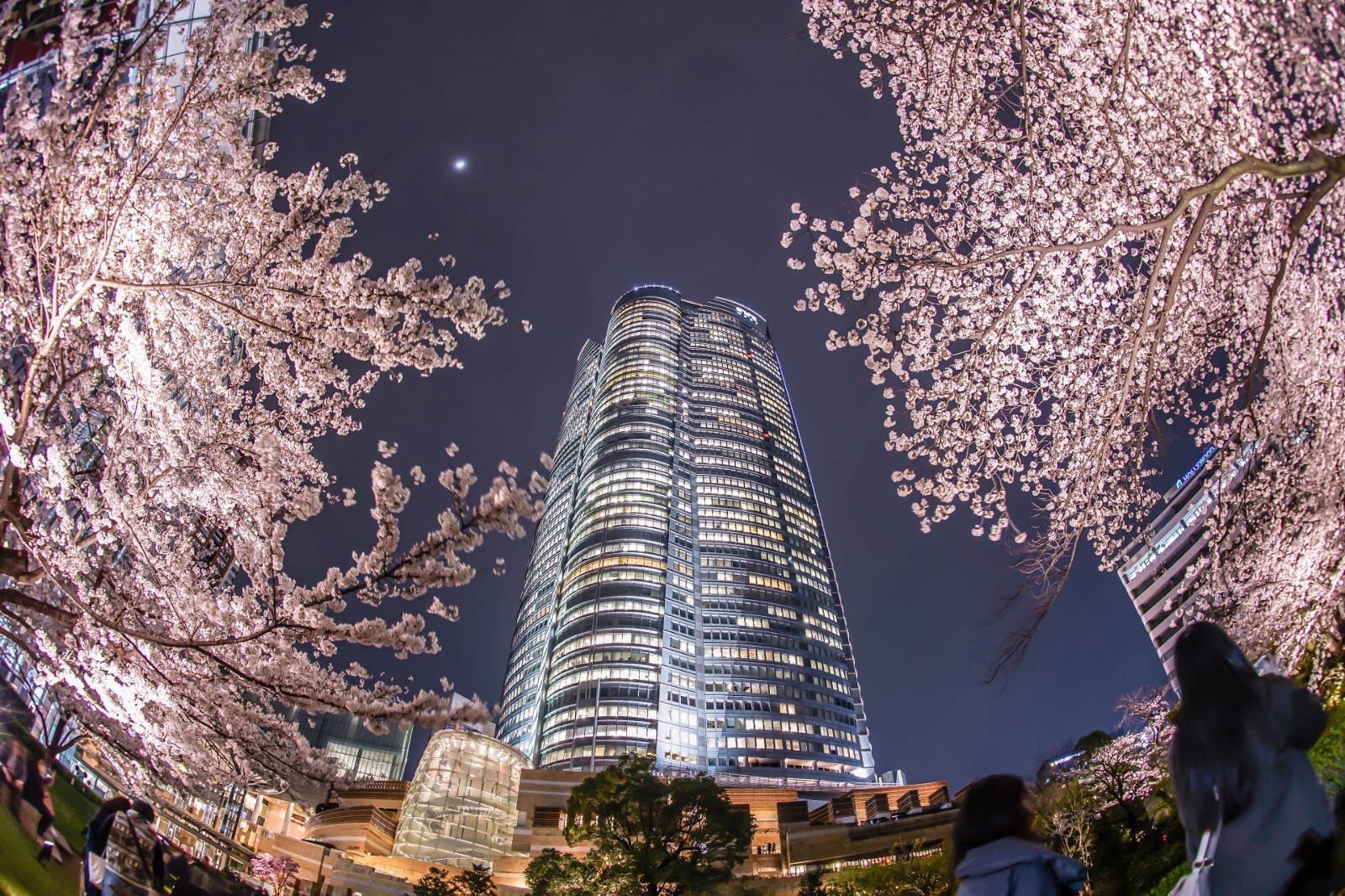
Roppongi Hills doesn’t just run on architecture and commerce, it leans into seasonality with some of Tokyo’s most visually polished public events. The spacious Mori Garden, designed in a Japanese style, is a popular destination for viewing cherry blossoms in spring. The Christmas season is another of the annual highlights, with a popular Christmas Market and the Roppongi Hills Winter Illumination, held from late November through December, transforming Keyakizaka Street into a tunnel of LED light displays, with Tokyo Tower framed in the background for perfect photos.
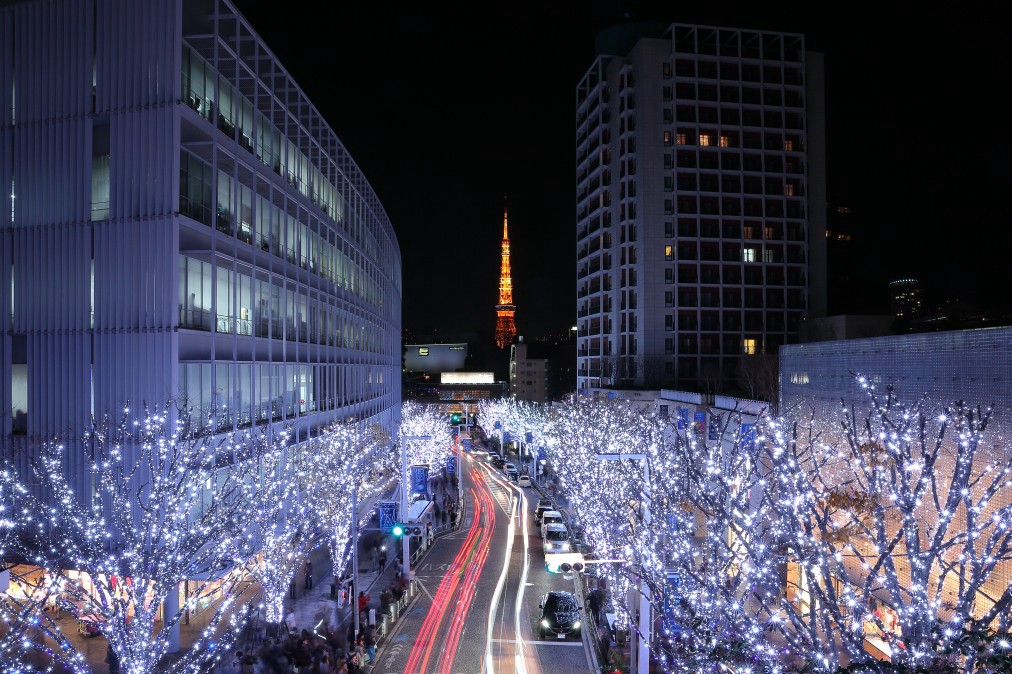
Spring often brings cherry blossom-focused installations or open-air art at Roku-Roku Plaza. During summer, the Roppongi Hills Bon Odori festival brings traditional dance, food stalls, and yukata-clad visitors to the heart of the complex. Schedules are tightly organized, and many events are free, drawing both locals and tourists.
Shopping & Dining
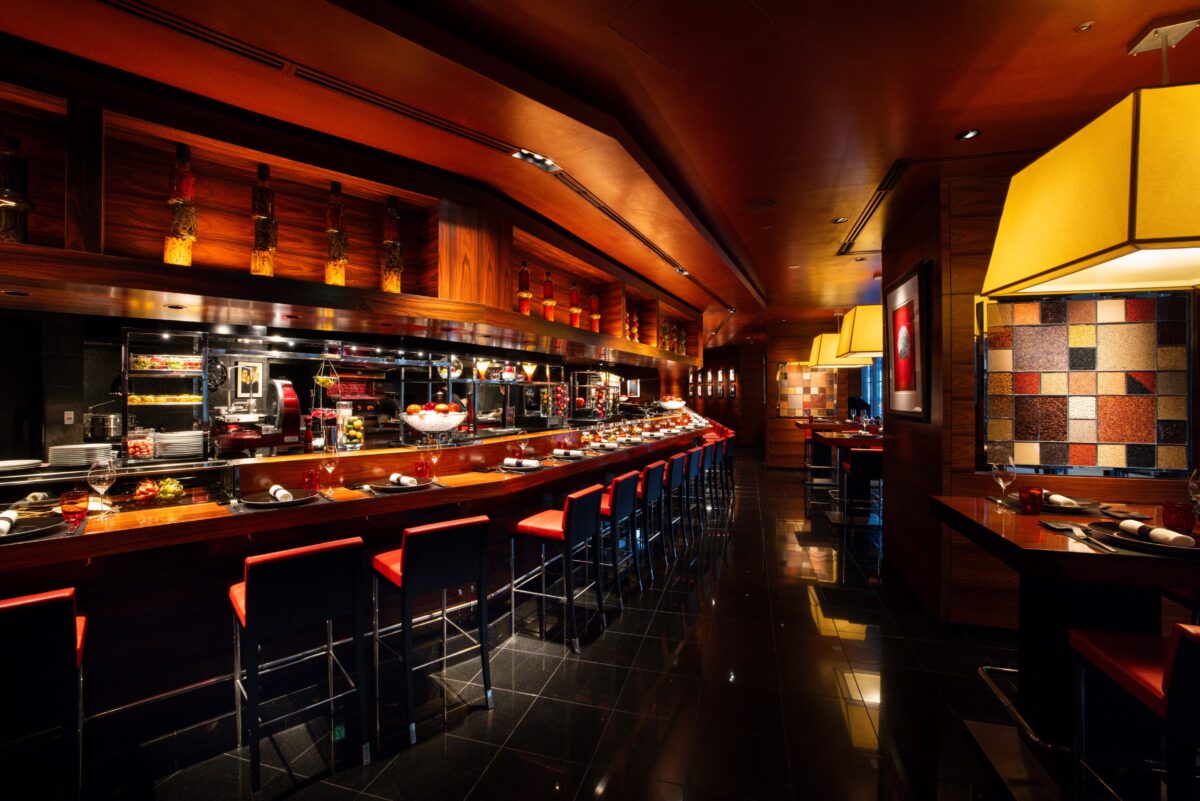
Retail here leans heavily toward the high-end, with flagship stores for brands like Louis Vuitton, Rolex, and Issey Miyake. That said, the complex also includes more accessible options, from Japanese lifestyle brand Muji to international chains like Zara and Banana Republic.
Dining is equally broad. You’ll find Michelin-starred restaurants, stylish sushi bars, and casual cafes, all within walking distance of each other. Popular picks include L’Atelier de Joël Robuchon and Rigoletto Bar and Grill for tapas and cocktails. It’s not cheap, but it is consistent in quality and presentation.
Roku-Roku Plaza & Public Art
This open-air square functions as the living room of the complex. On weekdays, it’s a quiet meeting spot. On weekends and holidays, it becomes a venue for pop-up markets, screenings, and live performances. The plaza is flanked by iconic sculptures, including Maman, the giant spider by Louise Bourgeois—one of Tokyo’s most Instagrammed pieces of public art.
The Hills’ commitment to blending public art into daily movement continues with smaller works scattered across the site. These pieces aren’t behind glass—they’re part of the walking routes, adding character to an otherwise concrete-heavy layout.
Special Exhibits and Tech-Driven Installations
In recent years, Roppongi Hills has become a test site for tech-enhanced experiences. Past events have included augmented reality art exhibits, QR-code guided treasure hunts, and concept stores showcasing everything from NFTs to AI-driven fashion.
While these events are often limited-time, they reflect the direction Roppongi Hills is heading—less traditional, more digital, and always image-ready. Checking the official Roppongi Hills website or the Mori Art Museum calendar before visiting is advised, especially if you’re hoping to catch one of these short-run features.
How to Get to Roppongi Hills
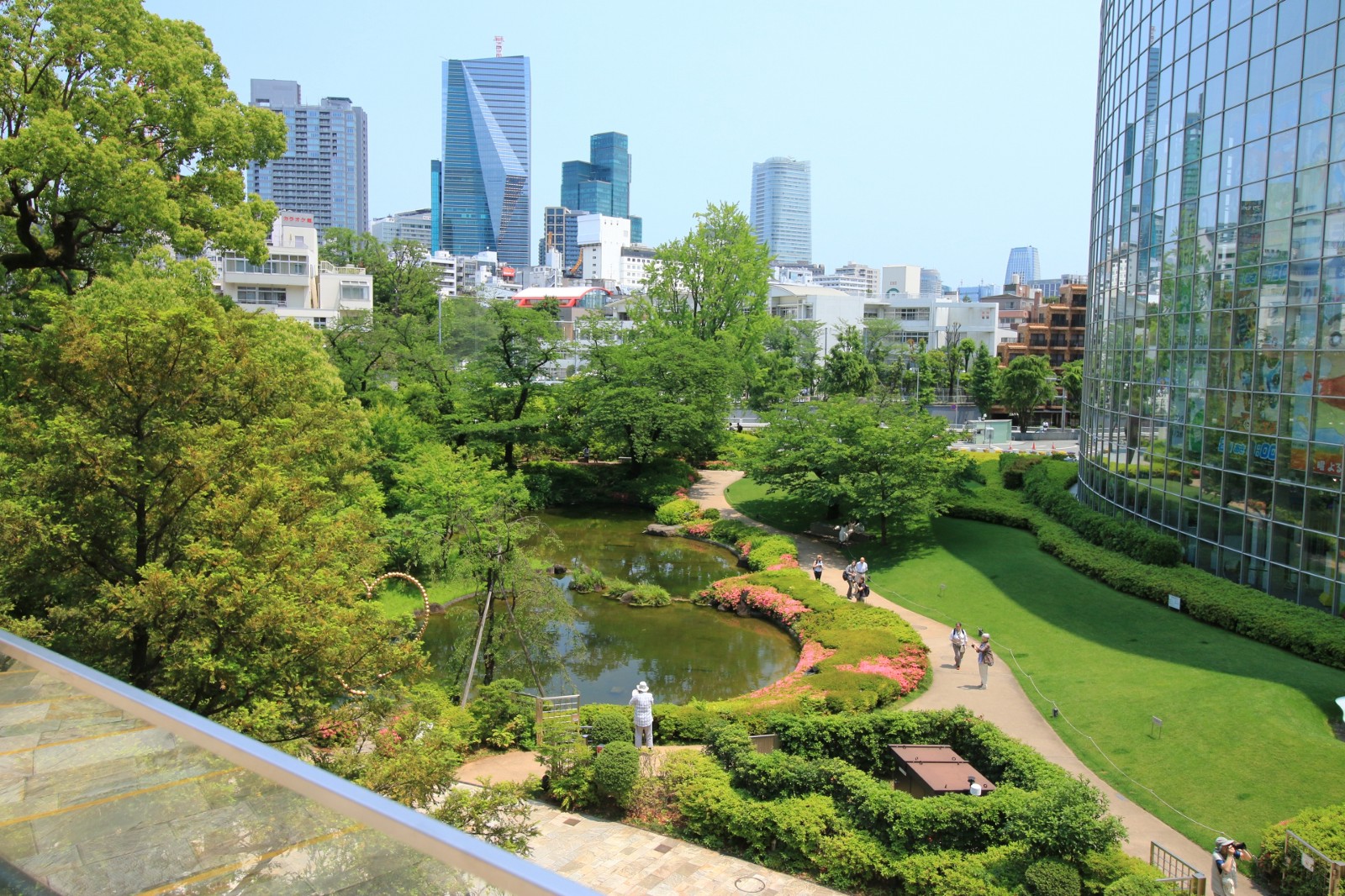
Roppongi Hills is centrally located in Minato Ward, making it easily accessible by Tokyo’s efficient rail network. The complex is built with direct underground connections, and the surrounding area is pedestrian-friendly despite its urban density. Whether you’re coming from Shibuya, Shinjuku, or Tokyo Station, travel time is typically under 30 minutes.
By Train
The most convenient access point is Roppongi Station on the Tokyo Metro Hibiya Line and Toei Oedo Line.
-
From Hibiya Line (Tokyo Metro): Exit 1C connects directly into Roppongi Hills via a covered underground passage with escalators and signage in both Japanese and English. This is the smoothest option, especially in bad weather.
-
From Oedo Line (Toei Subway): Use Exit 3 and walk for about 5 minutes. The route is above ground, with clear navigation to the complex.
Alternative access is also possible via Nogizaka Station (Chiyoda Line) or Azabu-Juban Station (Namboku Line), but both require a 10–15 minute walk and aren’t directly connected.
Getting Around Inside the Complex
Roppongi Hills is large, but it’s been carefully zoned. Most major attractions are within a 10-minute walk from each other, aided by escalators, signage, and shaded walkways.
-
Mori Tower is the central point: Museum and observatory access starts at the Museum Cone entrance.
-
Shopping areas are divided into West Walk, North Tower, and the Metro Hat/Pavilion zone.
-
Public plazas like Roku-Roku and Keyakizaka Street are above ground and often used for events or seasonal displays.
Elevator and escalator access is reliable, and barrier-free design is implemented in most areas. Printed maps and digital directories are available throughout the complex in multiple languages.
Tips for Smoother Access
-
Avoid peak lunch hours (12:00–14:00) if you’re visiting on a weekday—office workers fill up the elevators and food courts.
-
Evenings after 6:00 p.m. are ideal for catching the city view with fewer crowds.
-
If you’re planning to visit the Mori Art Museum and Sky Deck, consider buying a bundled ticket online in advance, which allows you to skip the line during busy hours.
Tourist Attractions Near Roppongi Hills
While Roppongi Hills itself is packed with attractions, several key destinations are within walking distance or just a short train ride away. These spots complement a visit to the complex, especially for travelers with time to explore the wider Roppongi and Minato area.
1. The National Art Center
Just a 10-minute walk from Roppongi Hills, The National Art Center is one of Japan’s most distinctive cultural venues. Unlike most museums, it has no permanent collection—only temporary exhibitions that rotate frequently, showcasing both domestic and international artists. The building itself, designed by architect Kisho Kurokawa, is worth the visit for its undulating glass façade and massive open interior.
Related: Roppongi Art Triangle: 3 Tokyo’s Cutting-edge Art Museums
See also: Suntory Museum of Art: a Part of the Roppongi Art Triangle
2. Tokyo Tower
A 15-minute taxi ride or a quick two-station hop on the Oedo Line brings you to Tokyo Tower, one of the city’s original observation landmarks. Standing at 333 meters, it offers a retro-cool alternative to modern skyscrapers and features two decks, souvenir shops, and the popular FootTown entertainment complex at its base. It’s especially photogenic at night, lit in seasonal colors.
3. teamLab Borderless: MORI Building DIGITAL ART MUSEUM
After relocating from Odaiba, the new teamLab Borderless museum is set to open near Azabudai Hills (also a Mori project), just one stop away from Roppongi Hills. The museum is known for its interactive digital installations that blur the line between visitor and artwork. With motion-sensitive light, color, and sound, it’s one of Tokyo’s most immersive cultural experiences—and a popular destination for travelers of all ages.
More info: Guide of Azabudai Hills’ teamLab Borderless
Ropongi Hills is located in the Roppongi area, and it’s one of the most exciting districts in Tokyo to visit! Check out more things to do and places to visit in the surroundings!
Written by
"The world is my oyster." As a dedicated globetrotter and hammock enthusiast, I’ve spent years chasing new experiences, collecting stories, and discovering the world’s most incredible destinations. Born and raised in Japan, I’ve always had a deep connection to my roots, but my love for adventure has led me to spend over a decade exploring countries across the globe—from culture-rich cities to remote hideaways.
Travel isn't just a hobby for me; it's a lifestyle. I'm constantly searching for new ways to fuel my wanderlust. Over the years, I’ve developed a wealth of knowledge and a treasure trove of tips that make traveling more enjoyable, practical, and meaningful.
Through my experiences, I've come to appreciate not only the beauty of travel but also the importance of understanding diverse cultures, embracing the unfamiliar, and stepping out of my comfort zone. My travels have shaped who I am today, and I’m excited to share those lessons with others.
With Japan Web Magazine, I aim to offer practical advice, insider tips, and firsthand stories that help travelers navigate their journeys to Japan or setting off on a global adventure. From hidden gems in Japan to travel hacks that make any trip smoother, I hope my insights inspire you to embark on your own adventures and make the most of every moment. Let’s explore the world together!
You can also find my stories here ▶ https://medium.com/@nahobm





